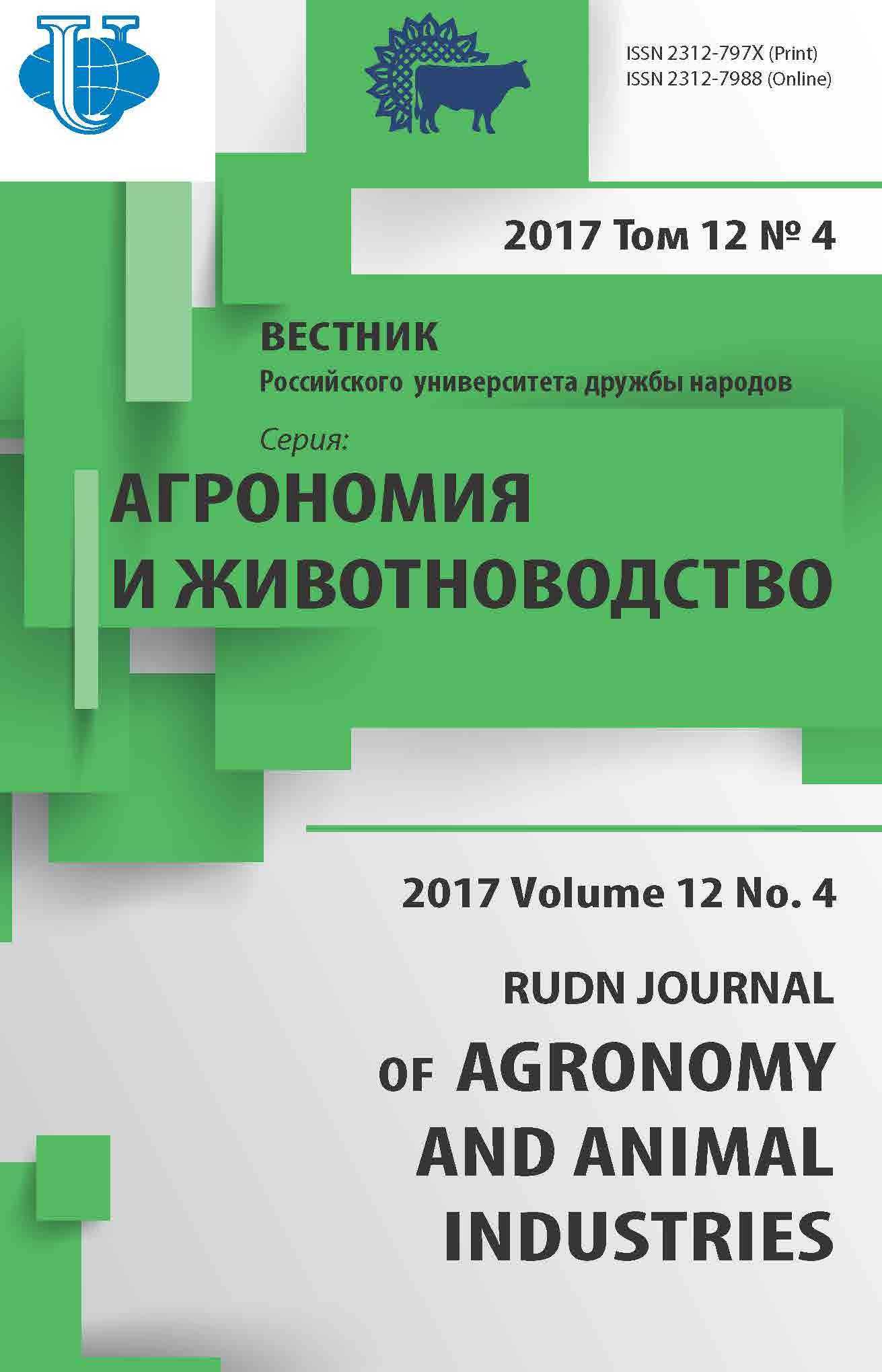SHORT PEPTIDES REGULATE THE GROW OF CALLUS CULTURE TOBACCO NICOTIANA TABACUM L
- Authors: Dilovarova TA1, Smesova SV1, Baranova EN1, Fedoreyeva LI1
-
Affiliations:
- All-Russian Research Institute of Agricultural Biotechnology, Russian Academy of Sciences
- Issue: Vol 12, No 4 (2017)
- Pages: 323-331
- Section: Articles
- URL: https://agrojournal.rudn.ru/agronomy/article/view/17475
- DOI: https://doi.org/10.22363/2312-797X-2017-12-4-323-331
- ID: 17475
Cite item
Full Text
Abstract
Phytohormones, which are secreted peptides, play an important role in intercellular inter-actions, participating in the regulation of development and in numerous physiological processes and in responses to the influence of environmental factors. Short peptides in a concentration of 10-7-10-8 M regulate the growth and development of the callus culture of tobacco (Nicotiana tabacum L.) in culture in vitro. AlaGluAspGly, AlaAspGluLeu, GlyGly and GlyAsp on the 28th day of cultivation showed an increase in the biomass of tobacco by a factor of 1.5 to 2.5, an increase in the number of regenerants per explant by 10-30%, and also the area of the leaf plate of regenerants by 2-2.5 times. Exogenous peptides influence the expression of genes encoding the proteins of growth factor regulators. It was found that the expression values calculated by the PCR-PB method depend on the nature of the peptide. In addition, structurally different peptides differentially affect the different genes (growth regulating factor) of GRF. The greatest increase in the expression level of GRF family genes is observed in the presence of AlaAspGluLeu - GRF1, GRF3, GRF4 3.5-4 times, in the presence of AlaGluAspGly - GRF2 more than 4.5 times, GlyGly - GRF4 more than 3 times, GlyAsp - GRF3, GRF4 in 3-4 times. It is assumed that in the cell culture, short peptides can act as a regulator of the growth of new generation plants that can find application in biotechnology and practical plant growing.
About the authors
T A Dilovarova
All-Russian Research Institute of Agricultural Biotechnology, Russian Academy of Sciences
Author for correspondence.
Email: dilovarova@yandex.ru
Диловарова Татьяна Анатольевна - кандидат биологических наук, старший научный сотрудник группы геномной модификации ФГБНУ Всероссийского НИИ сельскохозяйственной биотехнологии
Timiryazevskaya st., 42, Moscow, Russia, 127550S V Smesova
All-Russian Research Institute of Agricultural Biotechnology, Russian Academy of Sciences
Email: smesova.svetlana@mail.ru
Смесова Cветлана Викторовна - студент РГАУ Московской сельскохозяйственной академии им. К.А. Тимирязева; младший научный сотрудник группы геномной модификации ФГБНУ Всероссийского НИИ сельскохозяйственной биотехнологии
Timiryazevskaya st., 42, Moscow, Russia, 127550E N Baranova
All-Russian Research Institute of Agricultural Biotechnology, Russian Academy of Sciences
Email: greenpro2007@rambler.ru
Баранова Екатерина Николаевна - кандидат биологических наук, ведущий научный сотрудник лаборатории клеточной биологии ФГБНУ Всероссийского НИИ сельскохозяйственной биотехнологии
Timiryazevskaya st., 42, Moscow, Russia, 127550L I Fedoreyeva
All-Russian Research Institute of Agricultural Biotechnology, Russian Academy of Sciences
Email: fedlara@inbox.ru
Федореева Лариса Ивановна - доктор биологических наук, ведущий научный сотрудник группы геномной модификации ФГБНУ Всероссийского НИИ сельскохозяйственной биотехнологии
Timiryazevskaya st., 42, Moscow, Russia, 127550References
- Kharchenko P.N. Problems of agro-biotechnology. FEDERAL state budgetary scientific institution “Rosinformagrotekh”, 2012. C. 1—260.
- Czyzewicz N., Yue K, Beeckman T. Communications I. estimates in a bottle: small signalling peptide outputs during growth and development. J. exp. Biolle. 2013. No. 66. P. 5229—5243.
- Murphy E., Smith S., De Smet I. Signalling Small peptides in Arabidopsis development: how cells communicate at a distance shot. Plant cell. 2012. No. 24. P. 3198—3217.
- Wang G., Zhang G., Wu M. CLE Signaling peptides and cross stem with phytohormones and environmental stimuli. Science about plants by 2016. No. 6. P. 1211—1217.
- Betsuyaku S., Sawa S.M. Yamada functions of CLE peptides in plants plant development microbe interactions. The Arabidopsis book. 2011. No. 9. P. 149.
- Fedoreeva L.I., Dilovarov T.A., Agapkin V., Martirosyan Yu.C., Khavinson X., Kharchenko P.N., Vanyushin B.F. Short peptides regulate gene expression of exogenous CLE, KNOX1 and GRF from Nicotiana tabacum. Biochemistry. 2017. No. 82. P. 700—709.
- Murashige T., Skoog F. Revised medium for rapid growth and bioanalysis with tobacco tissue cultures. Physiology of plantar. 1962. T. 15. No. 3. S. 473—497.
- Zhang V., Ju. R. Molecular mechanism of stem cells in the Arabidopsis talian. Pharmakogn. Rev. 2014. No. 8(16). P. 105—112.
- Omidbakhsfar A.M., Proust C., Fujikura U., Mueller-Roeber B. Growth-regulatory factors (CSF): a small Transcription factor family with essential functions in plant biology. Biochemistry Plant. 2015. No. 8. P. 998—1010.
- Jimenez V.M. Participation of plant hormones and plant growth regulators under laboratory conditions somatic embryogenesis. Regulation of plant growth. 2005. T. 47. No. 2—3. P. 91—110.
Supplementary files















